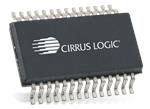

That's my infatuation with codec chips and their useless and sometimes misleading specs. I assume that ALC889DSD’s own amp wouldn’t be used in that case.ĬXD9872 and ALC889DSD were marketed as 'Sound Reality' chip by Sony - they used to list S/N ratios on documents pertaining to walkmans, S-Master amps and VAIO Sound Reality (as chip direct output, not individual implementations). Some desktops paired ALC889DSD with the Sony S-Master amp. Later Sony switched to ALC889DSD by Realtek, which could allow MIC IN DSD recording. Notably the CXD9872 was stated by Sony to be their ‘own’ codec chip, when in reality, buyers noticed that the foundations were from Sigmatel. Ever since Sony VAIO’s strong advertising of DSD and their Sigmatel/IDT (VAIO 2005-08) CXD9872 implementations I have had an infatuation with codec chips. It is now common knowledge that these first appeared for smartphone jack replacement, but subsequently, thanks to USB-C to USB A adaptors, could be used in PCs to replace Realtek ‘crab’ sound. I value DSD and 44.1kHz multiples of PCM. If I had to choose between Meizu and Apple, I’d choose Meizu.

Meizu Hifi’s circuitry is encased in metal though. Meizu Hifi is like a longer version of Apple’s TPU dongle, except black. Tempotec SHDP has Savitech’s ASIO driver, and so can sometimes playback DSD256. Meizu Hifi cannot record DSD, but at least it can record only 16/48 PCM mono which Tempotec SHDP cannot. On the other hand, IVX has recently again proposed Meizu Hifi as the better choice over Tempotec SHDP. I have repeatedly read that Meizu Hifi will be affected by the quality of the 5V USB rail.

Later in 2020 products with dual CS43131 such as iBasso DC03 began appearing. It was Hidizs / Tempotec / Meizu that first drew my attention to CS43131.


 0 kommentar(er)
0 kommentar(er)
